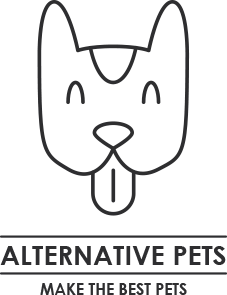
Essential oils offer invigorating smells which have a calming and soothing effect when inhaled. They are very popular in households as they provide a range of health benefits and can be enjoyed by all family members. However, bringing a pet into the picture might change things a bit.
Whether you are specifically thinking of using essential oils on your dog or want to try aromatherapy within the comfort of your own home but are worried about the safety of your pooch, there are certain things you need to know.
Essential oils can improve the overall wellbeing of your pooch but if done wrong, they can prove toxic as well.
Read on to find out all that you need to know about essential oils for dogs.
Are Essential Oils Safe for Dogs?
The answer is yes, absolutely! But ONLY if you use them properly and avoid certain types, as will be discussed further on.
However, you should always consult your veterinarian before trying aromatherapy for dogs or using essential oils when they are around. Let them know if your pet has any health issues or has suffered from any major medical illness in the past.
Your vet will be able to guide you further on whether you should or shouldn’t use essential oils on or around your dog.
Why Should You Use Essential Oils on Dogs?
Essential oils are used as an alternative supporting therapy in dogs. They can help relieve the symptoms of certain physical ailments such as reducing arthritis pain, providing relief from allergies and inflammation, helping with nausea and the likes.
Certain essential oils such as lemongrass and chamomile help control fleas and parasites as well as sooth insect bites and improve your dog’s skin condition.
In other words, most of the benefits of essential oils for humans can be extended to dogs and other pets as well. But remember that while it is often considered safe for humans to ingest essential oils or inhale them directly, the same does NOT apply to pets.
How Should You Use Essential Oils on Dogs?
To use essential oils on dogs, you must consult someone with a strong background in aromatherapy. Experts at essentialoilhaven.com recommend the following tips to make essential oils safe and beneficial for your beloved four-legged friend.
- Always, always dilute the oil before use – Dogs have a highly acute sense of smell. What might be a faint scent to us is likely to be a hundred times stronger for them. Therefore, owing to their increased sensitivity to smell, you should only use a few drops of essential oil and dilute them before letting your pet sniff it. To dilute essential oil, mix it with a carrier oil like coconut, jojoba, or avocado among others, and use an essential oil diffuser to gently spread the smell in the atmosphere.
- Consider your pooch’s age and overall health – Essential oils must not be used around pups. Similarly, avoid using these stimulating liquids around a dog that is expecting or has just given birth. If you absolutely need to use essential oils around a nursing dog, then check in with your vet first. Hydrosols are usually the best alternative under such circumstances. These are distilled byproducts that contain diluted essential oils.
- Choose only high-quality oils – To ensure that you treat your
favorite buddy with the very best, pay attention to the following when buying essential oils for dogs.
- Distillation and/ or expiration date
- GC/ MS testing – This is a mark of quality that ensures the product has been tested with gas chromatography (GC) and mass spectrometry (MS)
- NAHA membership – It is best to select aromatherapy products that are endorsed by the National Association for Holistic Aromatherapy (NAHA) or similar high-authority organizations.
Harmful Essential Oils for Dogs
Following are some of the stimulating oils that are considered unsafe for dogs. Make sure you don’t opt for them (even if they meet the criteria for quality discussed above).
- Peppermint oil
- Citrus oil
- Tea tree
- Eucalyptus oil
- Sweet birch
- Clove
- Ylang ylang
- Wintergreen
- Pine
- Pennyroyal
- Cinnamon
The key to making essential oils safe for your dog is to let them get used to it slowly. Introduce the smell by holding a bottle containing diluted essential oil at a 3-4 feet distance from your pet. Or place an item sprayed with hydrosol near them and see how they react. If your dog licks its tongue or blinks rapidly, it means it likes the scent whereas backing away or showing a lack of interest is a clear sign that you need to choose a different fragrance.
